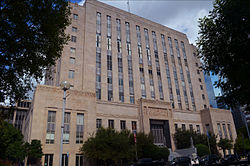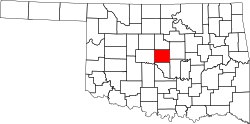2021 estimates
The Census Bureau estimated the county's population at 802,559 in 2022, while 2017–2021 American Community Survey estimates reported that 54.5% of residents were non-Hispanic white, 15.8% Black or African American, 4.7% Asian, 0.1% Pacific Islander, 5.8% multiracial, and 18.5% Hispanic or Latino of any race; 10.2% of residents were foreign-born during the same period. [14] During 2017–2021 there were 313,822 households with an average of 2.48 people per household, the median value of an owner-occupied housing unit was $164,000, and the median gross rent was $929. [14] The median household income was $58,239 with a per capita income of $34,129, and 16.3% of residents lived at or below the poverty line. [14]
2020 census
As of the 2020 census, the county had a population of 796,292. Of the residents, 24.4% were under the age of 18 and 14.5% were 65 years of age or older; the median age was 35.4 years. For every 100 females there were 96.1 males, and for every 100 females age 18 and over there were 93.2 males. [15] [16] The racial makeup of the county was 54.9% White, 15.1% Black or African American, 3.4% American Indian and Alaska Native, 3.5% Asian, 10.0% from some other race, and 12.9% from two or more races. Hispanic or Latino residents of any race comprised 19.3% of the population. [16] There were 317,334 households in the county, of which 31.2% had children under the age of 18 living with them and 30.3% had a female householder with no spouse or partner present. About 31.0% of all households were made up of individuals and 10.5% had someone living alone who was 65 years of age or older. [15] There were 352,544 housing units, of which 10.0% were vacant. Among occupied housing units, 56.5% were owner-occupied and 43.5% were renter-occupied. The homeowner vacancy rate was 1.8% and the rental vacancy rate was 11.7%. [15]
2010 census
According to the 2010 U.S. census, there were 718,633 people, 277,615 households, and 172,572 families residing in the county. The population density was 1,013 inhabitants per square mile (391/km2). There were 319,828 housing units at an average density of 416 units per square mile (161 units/km2). The racial makeup of the county was 64.6% White, 15.4% Black or African American, 3.5% Native American, 3% Asian, 0.1% Pacific Islander, 8.1% from other races, and 5.3% from two or more races; 15.1% of the population were Hispanic or Latino of any race. [17] Throughout its population, 12.4% were of German, 12.3% Mexican, 10.1% Irish, 7.9% English, and 7.7% American ancestries according to the 2010 census. 84.4% spoke English and 11.5% Spanish as their first language. [18]
In 2010, there were 277,615 households, out of which 28.5% had children under the age of 18 living with them, 43.1% were married couples living together, 15.4% had a female householder with no husband present, and 37.8% were non-families. 31.9% of all households were made up of individuals, and 9.7% had someone living alone who was 65 years of age or older. The average household size was 2.56 and the average family size was 3.26.
In 2010, the median income for a household in the county was $42,916, and the median income for a family was $54,721. The per capita income for the county was $25,723. About 11.70% of families and 15.30% of the population were below the poverty line, including 21.70% of those under age 18 and 8.60% of those age 65 or over. [19]





